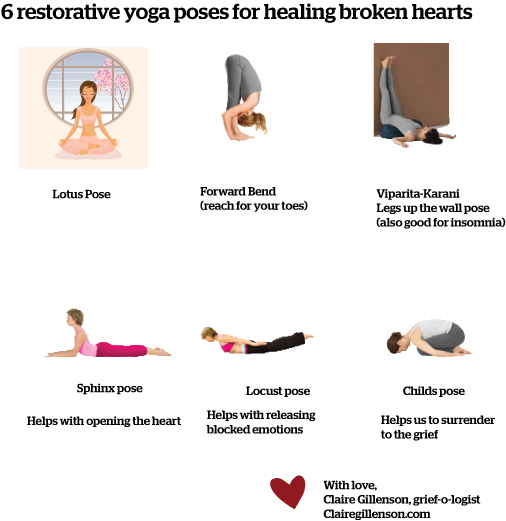
Many people want to know when yoga teachers recommend the best time for them to practice. This question is personal. It depends on your preferences and time of day. For more information on yoga timing, see this article. You will be surprised at how much information you can find! Here are the top 10 most frequent questions yoga teachers are asking and their answers.
Morning
Doing your yoga practice in the morning has many benefits. It's easier to get your yoga practice done in the morning. Additionally, you'll feel more energetic due to the stronger sun's radiation. In addition, you'll be less dependent of caffeine and coffee which can be very harmful for your body. Also, practicing yoga in the morning will improve digestion. Yoga is best practiced in the morning, so start your day earlier!
While mornings are often cooler, they are also a bit cooler. This allows people who are stiff to do difficult arm balances or stretch their muscles. A full stomach makes difficult arm balances much easier. The morning practice of yoga will make you feel less anxious and provide more energy throughout the day. Why is morning yoga so great? Let's take a look at some of the reasons.

Brahma Muhurta
The Brahma Muhurta is a time when you can practice meditation and exercise. During this time, you should focus on your breathing and flex your body in sync with your breathing. These exercises help you shed fat and loosen stiffness. These exercises can also help you digest and refresh your mind. Take a look at your day to help you stay focused and calm. Be aware of how you react in different situations.
If you plan to practice yoga during the Brahma Muluta, it is a good idea. Yoga will bring you the greatest benefits, including the ability for you to transcend the physical as well as the spiritual dimensions. This practice can be done at any time, but it is best to do it before dawn, in the early morning. The best way to relax after a hard day at work is with yoga.
Your 24-hour life span will dictate how you spend your time.
Your practice and the time you want to do it will dictate the best time. Some people find mornings to be the best time, while others feel more relaxed and refreshed in the evenings. Yoga can be done at any time of the day, including dawn and dusk. A practice at sunset or sunrise may suit those who enjoy the outdoors.
Morning yoga can increase your energy levels and help set the tone for your entire day. Morning routines can be more reliable, making it easier to stay with them. Morning classes are more attractive because morning energy is higher than evening energy. Some people practice yoga even with a full stomach. No matter what your reason for practicing, make sure to find a time that works for you!

Weather
Weather is an important consideration if you plan to take a class outside. Yoga is best practiced in the cool shade, even though temperatures can vary widely from one location. In hot weather, you should avoid poses that generate heat like fish or camel pose. In hot weather, it is best to stick with gentler poses such as the crow posture. This article will help you understand why and when you should do yoga outside.
Yoga is best practiced in autumn. Fall offers many opportunities to connect and share. Students are back at school, while office workers start their work year. The cooler weather allows big movements. This is a great opportunity to try new yoga poses! You'll also feel more energetic. Yoga will help you deal with stress. Moreover, autumn is also a great time to practice yoga if you're a beginner.
FAQ
Does yoga make me look like a hunk?
No! No, you won't look like a Hollywood celebrity after doing yoga. Instead, yoga will make you appear stronger, fitter, more flexible, and toned.
Are there many types of yoga?
Bikram yoga (Bikram heated) is the most well-known type of yoga. Other forms include Hatha, Ashtanga, Vinyasa, Iyengar, Kundalini, Yin, Power Yoga, Flow Yoga, Reiki, Pilates, Restorative, Aerial, etc.
How does yoga work?
Yoga is based upon alignment, breath control. Meditation and stillness principles. If done properly, yoga can bring peace and calm to the practitioner.
Warming up is an important step in any yoga class. For example, you could start with forwarding bends. These moves can loosen tight muscles and prepare your body for deeper poses.
Next is the balance pose known as "standing." Standing with your feet straight, keeping your arms straight, the "standing" pose requires you to look toward the ground. Your body should feel grounded, centered, balanced, and rooted.
The final step is deep stretching. To do these poses, lie face-up on a flat surface and lift your legs. Grab onto something sturdy to keep you from falling. If you don’t possess anything to grab on to, put your hands on a nearby surface.
After completing all of these poses, you can move on to a series standing poses. These poses include the warrior pose, mountain pose, downward facing dog and upward facing dog, plank pose, final pose, and plank pose.
It is important that you breathe deeply and slowly while doing yoga. Deep breathing is good for your lungs and calms the mind. You can do this by focusing on your inhales and exhales. Make sure to count every time you take another breath.
Even while cooking, you can do yoga anywhere! Follow the steps above, but don't lie on your back.
Start with 10 minutes daily if you're new to yoga. Yoga can be beneficial for anyone, regardless of age.
Where can I find an experienced yoga teacher?
Local yoga teachers are available. You can also search online for a qualified yoga teacher if you don't live in a nearby area. Online registration is also an option.
As a beginner, can I practice yoga every day?
Yoga is an excellent way to strengthen and stretch your body. It is also a great way to relax and release stress. You don't necessarily have to be a master of yoga to start to practice it regularly. For beginners, yoga should be practiced for 20 minutes at least three times per week.
This will allow you to get started. After that, you can gradually increase the time you spend practicing.
Statistics
- In comparison, a 125-pound person is estimated to burn 135 calories in 30 minutes of walking (at a pace of 15-minute miles) and 210 calories bicycling at a moderate pace on a stationary bike. (everydayhealth.com)
- The people in the yoga group were 37 percent more likely to have quit smoking by the end of the 8-week program. (nccih.nih.gov)
- About one in seven U.S. adults practiced yoga in the past 12 months, according to a 2017 national survey. (nccih.nih.gov)
- Start your Fall off right with 20% off All Access Membership when you sign up by 9/25! (corepoweryoga.com)
- Gentle yoga has been shown to ease some of the discomforts of tender, swollen joints for people with arthritis, according to a Johns Hopkins review of 11 recent studies. (hopkinsmedicine.org)
External Links
How To
Is yoga a good workout?
Yoga isn’t just for those who want to lose weight. It can also help you achieve flexibility, balance, coordination and strength.
Yoga isn't just a form of exercise. The poses can be used to relax or meditate. They can improve our posture, concentration and breathing.
A "yogi" is someone who practices yoga. Yogis follow various forms of yoga, including Hatha, Ashtanga, Iyengar, Vinyasa, Bikram, Kundalini, Yin Yang, and Restorative.
Although there are many styles of yoga, they all share the same goals. Each type focuses on different aspects of health and wellness. Some yoga styles include meditation, pranayama, and Hatha.
Some yoga exercises don't require you to have any equipment
-
Sun Salutation – The series of 12 positions starts with forward bend followed by 10 poses.
-
Warrior pose - A warrior pose can be achieved by holding a stick/staff.
-
Triangle Pose – To achieve this pose, you need to raise one leg and then bend at the knee.
-
Standing Forward Bend - This pose is performed by sitting on the floor with legs straight and then folding forward at the waist.
-
Seated Twist – This pose can be performed while seated on either a chair or a mat.
-
Cobra Pose- This is when you are lying flat on your stomach with your arms extended overhead.
-
Child's pose - This is when you are lying on your back, face up.
-
Cat/Cow Pose: This combination of a cow and cat pose is called the Cat/Cow Pose. Place your upper body on the ground and lie down. Next, roll onto your back and place both of your hands under you shoulders.
-
Head Tilt--This pose requires that you tilt your head back with your eyes closed.
-
Shoulder Stand - This pose is standing upright with feet and arms raised above your head.
-
Tree Pose: This pose requires you to kneel on your knees, with your hands under your shoulders.
-
Bow Pose: This pose requires you to bend forward from the hips, and then place your palms on ground.
-
Corpse Pose - This pose is held for five minutes.
-
Mountain Pose – This is a pose known as mountain pose. Your spine should be straightened and you must stand tall.
-
Legs up the Wall Pose: This pose requires that you hang upside-down on a wall.
-
Side Angle Pose- To achieve this pose, lean against a wall while putting your right elbow next to it.
-
Plank Position- When you lie on your stomach and extend your left hand and right foot apart, you can achieve this position.
-
Bridge Pose- Balance on your elbows and toes for this pose.
-
Reverse Table Top Pose - This pose is attained by lying on your tummy and reaching your arms toward the ceiling.
-
Handstand - This position requires balance and strength. This pose can be done by placing your hands between two walls, or using a door frame.
-
Half Moon Pose- Also known as Hero Pose. This is achieved by standing on your hands, and toes.
-
Handstand or Headstand - This pose requires balance and strength. This pose can either be performed on a wall or with a doorframe.
-
Forearm Balance: This pose requires that your forearms rest on the tabletop.
-
Spinal Twist – This position is where you lie on your stomach while reaching for your arms.
-
Supported Bound Angle Pose - This pose requires support and balance. You will need to find a sturdy object like a tree branch or an old beam to lean on.
-
Wide Leg Forward Fold: This position is achieved by stretching your legs apart and touching the tips of your toes.
-
Single Pigeon Pose: This is a variation of the forward-folding wide-leg position, but with only one leg.
-
Extended Puppy Dog Pose: This is a very relaxing pose. It involves extending your legs outward and bent your knees.
-
The Forward Bend pose involves bending forward and squatting cross-legged.
-
Crow Pose: This pose is very difficult, but it's rewarding once you get the hang of it. It is done by raising your arms above your head and lowering them until they parallel to the floor.